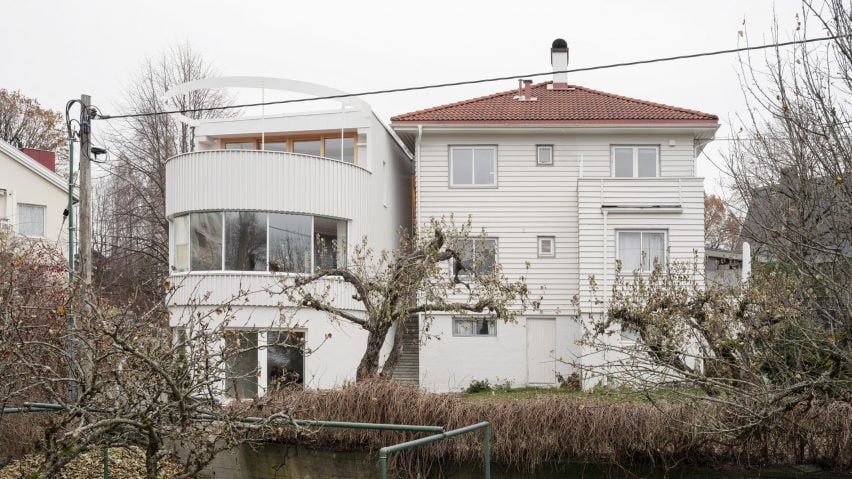
Vatn Architecture and Groma add curved extension to 1930s home in Norway
Norwegian studios Vatn Architecture and Groma have extended a home called Dråpa in Oslo, adding a curved form with a large terrace looking towards the city and its archipelago.
Designed for a painter and filmmaker, the extension pays homage to the 1930s architecture that characterises its suburban site.
This informed its name Dråpa – a type of laudatory poem.
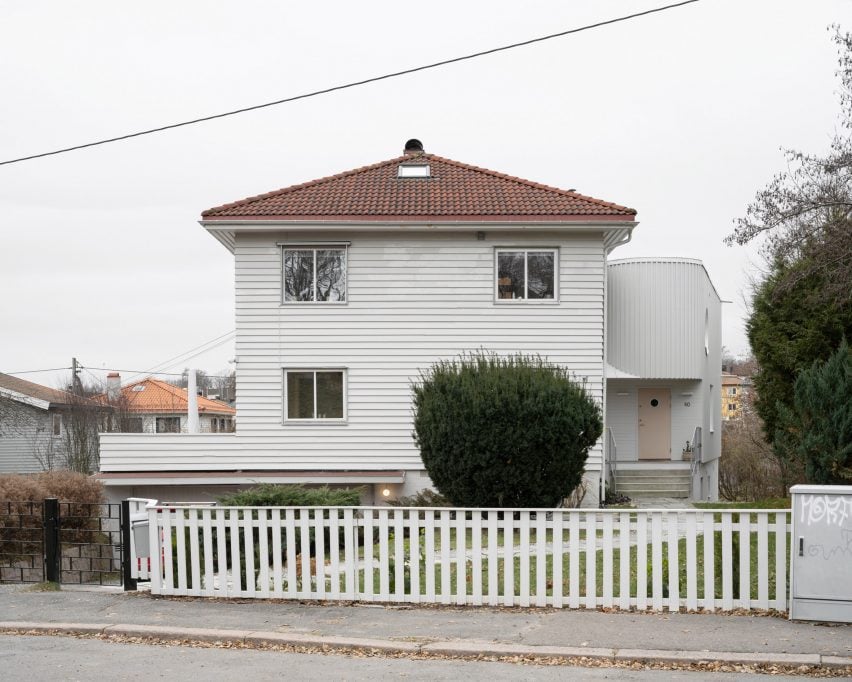
"The existing house is a well-preserved example of the period, but zoning rules often lead to pitch roofs or boxy extensions that stand out as foreign objects," Vatn Architecture founder Espen Vatn told Dezeen.
"We therefore consider the curved shape of the extension as in line with the house's character, and possibly in line with how an extension would have been made at the time the house was built," he added.
Aligning with the concrete basement and two storeys of the existing home, Dråpa provides three additional bedrooms and a living, dining and kitchen area within its curved form.
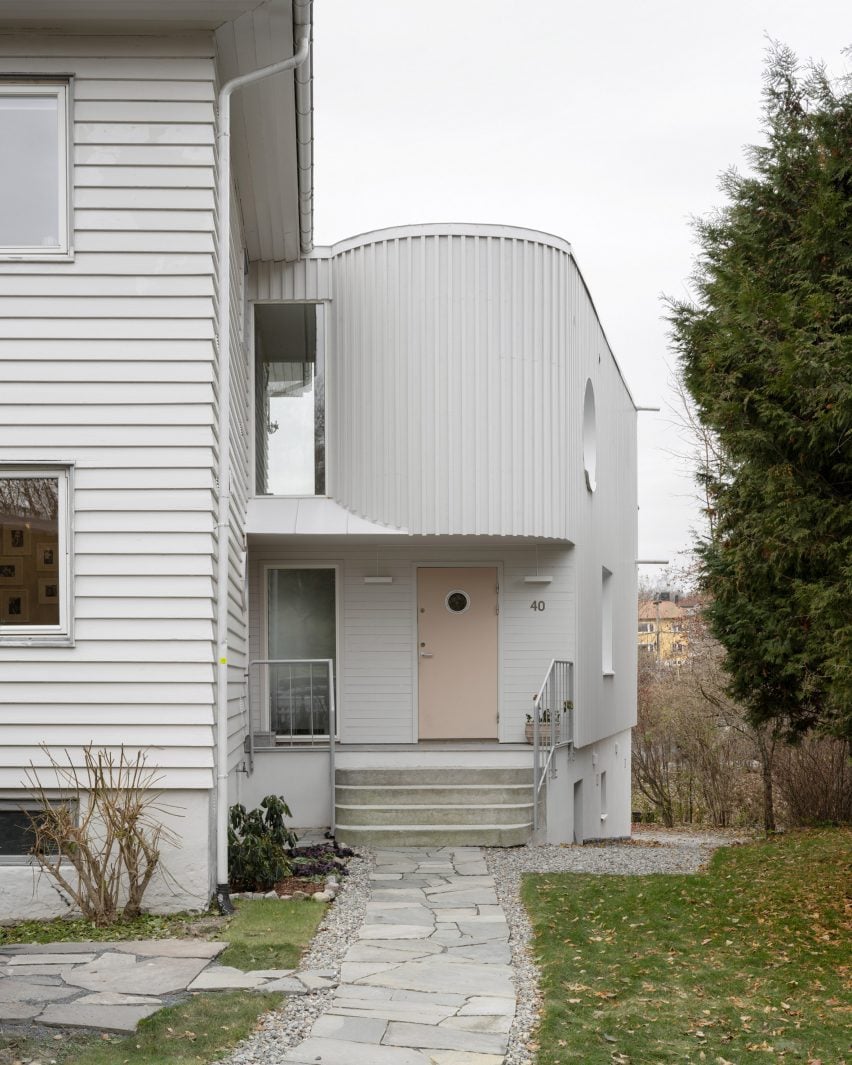
The extension introduces a ground-floor entrance to the home, which was previously accessed via its basement. This leads directly into a living, dining and kitchen space that connects to the stairwell of the existing home via a short bridge.
A kitchen counter lines the wall of this room, which opens out at its western end where a curving wall is punctured by panoramic windows.
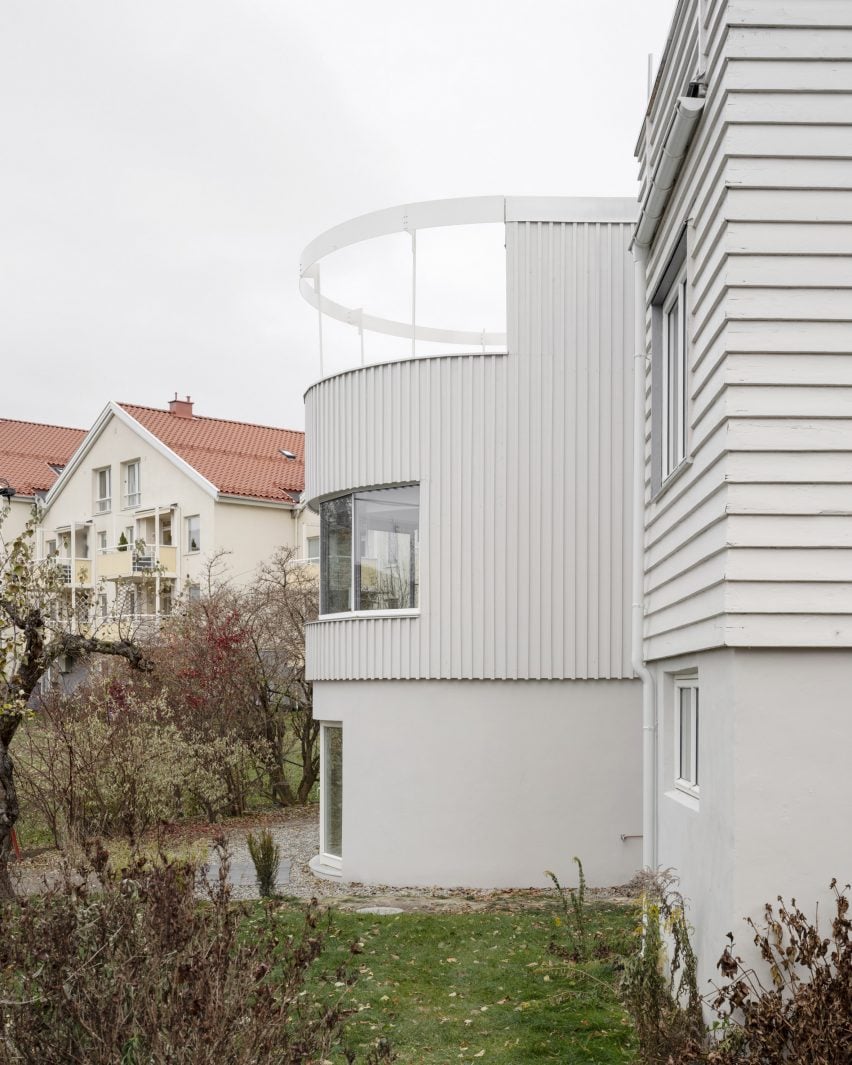
The central stairwell leads to the main bedroom on the extension's top floor. Here, wide timber steps lead up to a semicircular terrace overlooking the Oslo archipelago.
A separate stair leads down into the extension's basement, where two further bedrooms open out onto the garden through large glass doors.
"We wanted to work with the proportions of the new volume to create a dialogue between the two and keep the same height as the existing house," said Vatn.
"The site features a stepped topography, so that change also allowed us to work with the section in a more interesting way," added Groma founder Andrea Pinochet.
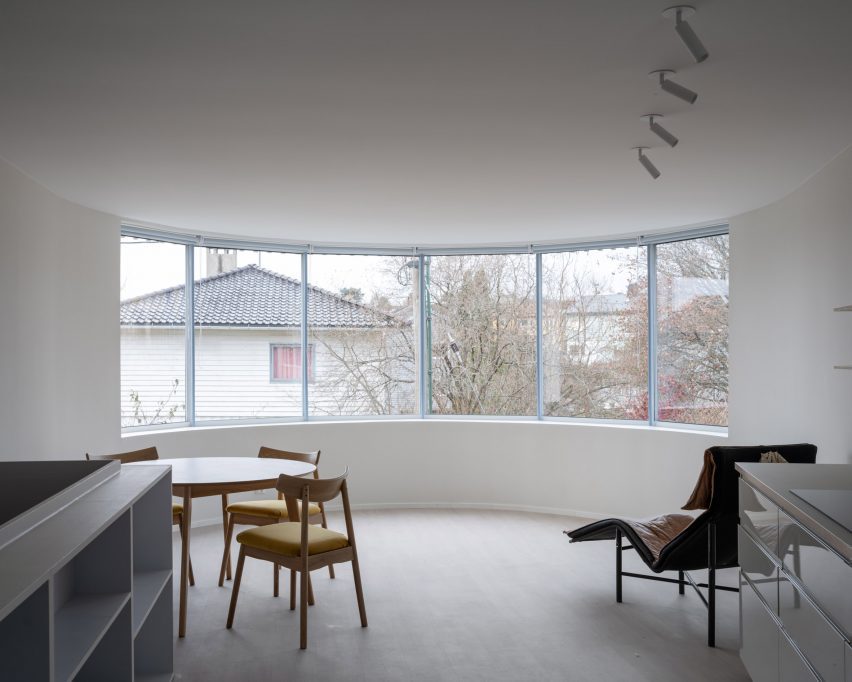
Slats of white-painted timber clad the home's exterior, matching the existing home but instead laid vertically to provide a subtle contrast.
The interior is defined by plastered walls painted white, with pale wooden floors and a blue-tiled bathroom with a circular window on the top floor.
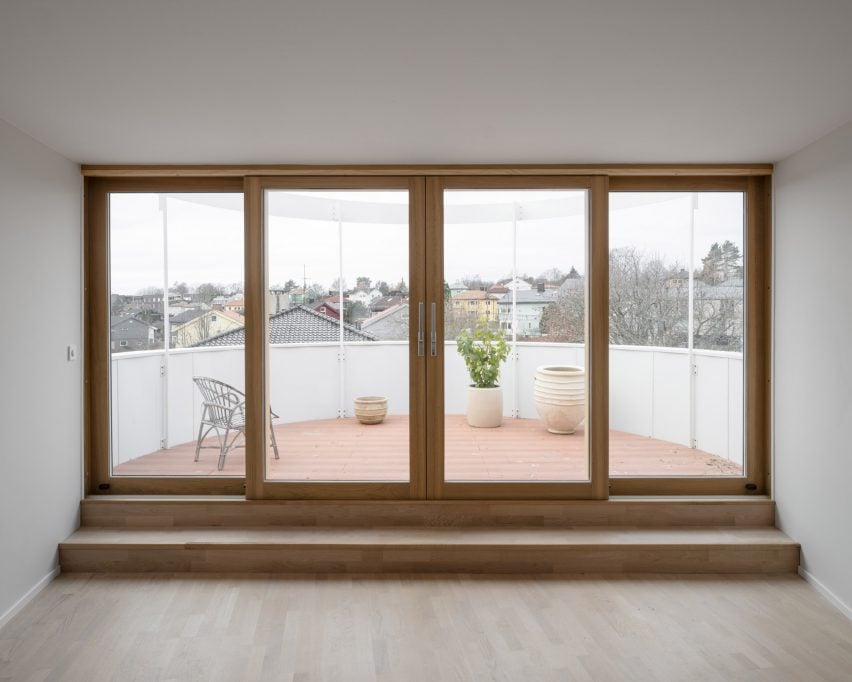
Vatn Architecture and Groma are both based in Oslo. The two studios previously collaborated on the conversion of an industrial storage unit into a studio for a film production company.
Other recent residential projects in Norway include a home by Gartnerfuglen Arkitekter that references traditional log cabins and a "floating treehouse" by Snøhetta.
The photography is by Johan Dehlin.